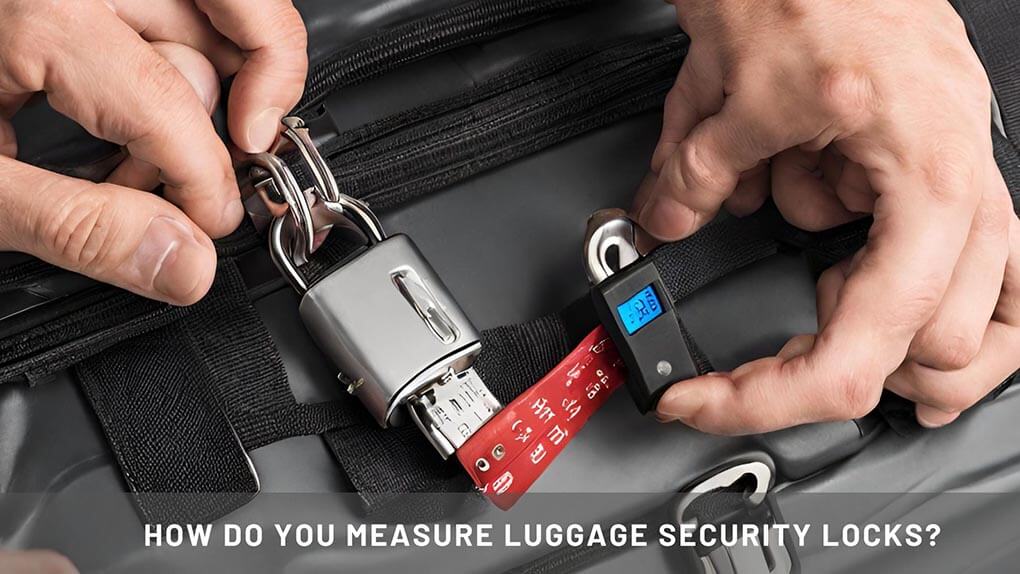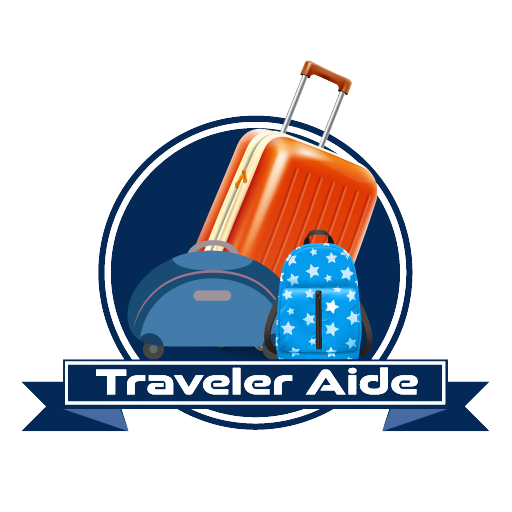You’re heading off on a trip and want to secure your luggage. Smart thinking. As someone who travels often for business and pleasure, keeping my bags locked is a top priority.
But, choosing the right luggage lock can be challenging. There are so many options out there, and who has time to measure precise lock dimensions while packing at the last minute?
I recently traveled to Europe and needed to buy a new luggage lock. I went to a travel store and looked at a variety of locks. I decided on a metal combination lock with TSA approval. I tested the lock’s security by trying to pick it up with a paperclip.
I also tested the lock’s durability by dropping it on the ground. The lock was not damaged by the fall. I also submerged the safety in water for several minutes. The water did not damage the lock.
I was very impressed with the security and durability of the luggage lock. I used the safety on my trip to Europe, and my luggage was safe and secure. In this guide, I will share my experience when I chose luggage security locks. I’ll also tell you where I measure the bag locks for safety. Let’s go to start.
What Type of luggage security locks measure
When picking luggage security locks, size and durability are very important. I love to travel and have learned that you need more than weak locks to keep your stuff safe. Here, I will explain TSA-approved locks, combination locks, and padlocks.
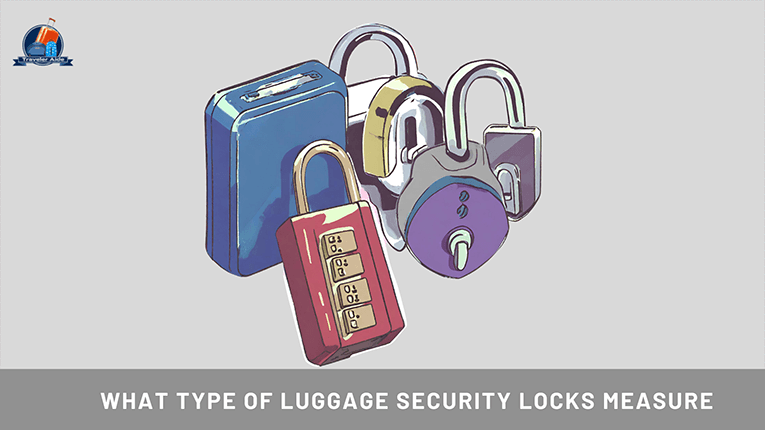
1. TSA-approved locks
Are you a frequent traveler? I prefer TSA-approved combination locks. These locks allow the TSA to open and inspect your luggage without damaging the lock. When choosing a lock for your luggage, find one that is strong and durable. Look for locks made of rigid materials like hardened steel. The waves must endure lots of use and possible damage from baggage handlers. For the best security, choose a lock with a minimum 3-digit combination.
To measure for a TSA lock, use a tape measure or ruler. Measure the diameter of your luggage’s zipper pulls or holes where the lock attaches. You want a snug but not tight fit. It’s best to measure a few spots to ensure consistency.
Most standard carry-on bags work well with locks in the 5/8-inch to 1 1/8-inch range. For checked bags, 1-inch to 1 3/4-inch waves do the trick.
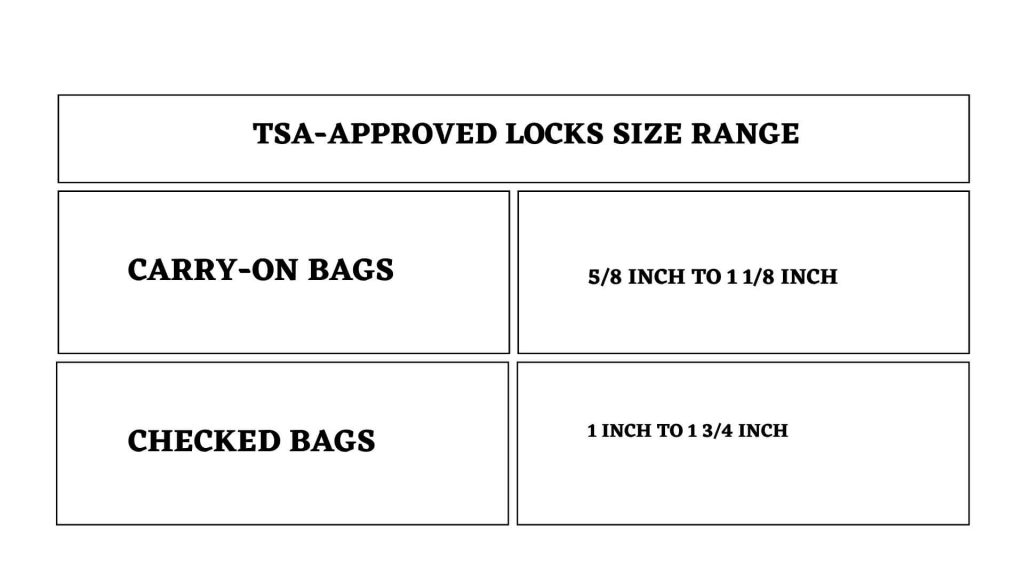
2. Combination locks
Combination locks allow you to set your own 3- or 4-digit code, so you don’t have to worry about keeping track of a key. A secret code can be entered by turning a series of numbered knobs or pressing several buttons. If you enter the correct code, the lock will open. The safety stays closed if the wrong code is entered.
Combination locks have many shapes and sizes and can be made from brass, steel, metal, and other materials. Some combination locks are also weatherproof, making them suitable for outdoor use.
3. Padlocks
Padlocks use a key to lock and unlock. This type should be solid and long-lasting, with a shackle made of tough steel. You’ll need to measure your luggage’s zipper pulls to determine the correct size lock. The shackle opening, called the throat, should be big enough to slide over the zipper easily. But it shouldn’t be so big that the coil doesn’t hold.
Choose the right luggage lock for peace of mind that your belongings will be safe. Take the time to choose locks that suit your specific needs, and you’ll be well on your way to stress-free travel.
How to Measure Your Luggage Zipper to Find the Right Lock Size
When it comes to Luggage Security Locks, the size of your lock matters. It needs to be bigger, and it won’t secure your bag. It’s too big and won’t fit through the zipper pulls. You must measure your bag zipper before getting a lock because I travel often.
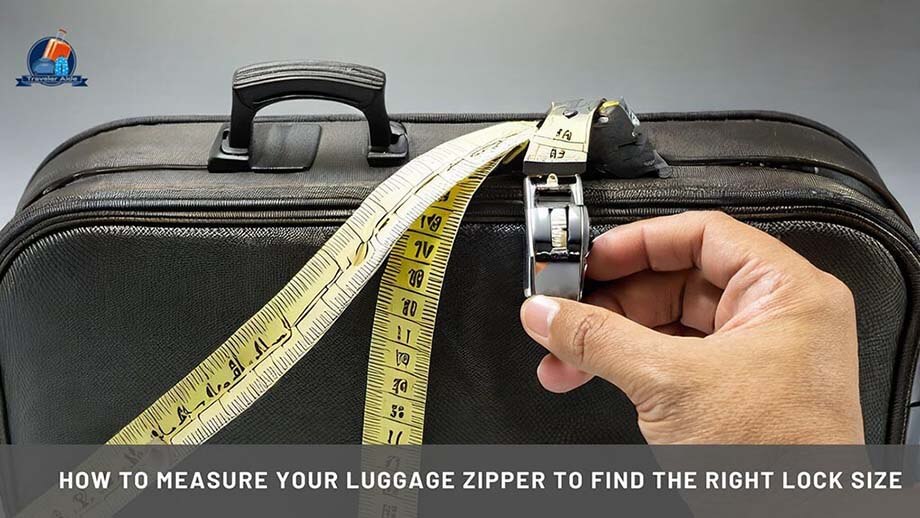
How to Measure Your Luggage Zipper
To find the right lock size for your bag, you’ll need to measure the width of your luggage zipper pulls. The zipper pulls are the two metal or plastic sliders that mesh together when you zip up your bag.
First, unzip your luggage bag to access the zipper pulls. Then, use a tape measure, scale, or calipers to determine how wide one zipper pull is in inches or millimeters. Be sure to measure the widest part of the pull, not just the narrow end. Round up to the following number to ensure the lock fits over the zipper pull.
A 15 mm to 25 mm lock should do the trick for most carry-on bags and small luggage. Medium or large checked bags typically need a 30 mm to 50 mm lock. Some heavy-duty bags for extreme travel may even need a 60 mm lock or larger. It’s also a good idea to test the lock on your zipper pulls before you travel. Place the safety on one of the zipper pulls, then remove the two pulls apart to ensure it’s attached but not too tight.
This way, you can make any final adjustments before taking your trip. You can be sure that your things will be safe until you reach your destination if you have the right-sized, high-quality bag lock.
Choosing the Correct Lock Size Based on Luggage Type
As an avid traveler, choosing the right Luggage Security Locks is essential. I want to ensure my belongings are secure without the hassle of too small or too large coils for my bags. When choosing locks for your luggage, the key is to get the size right.
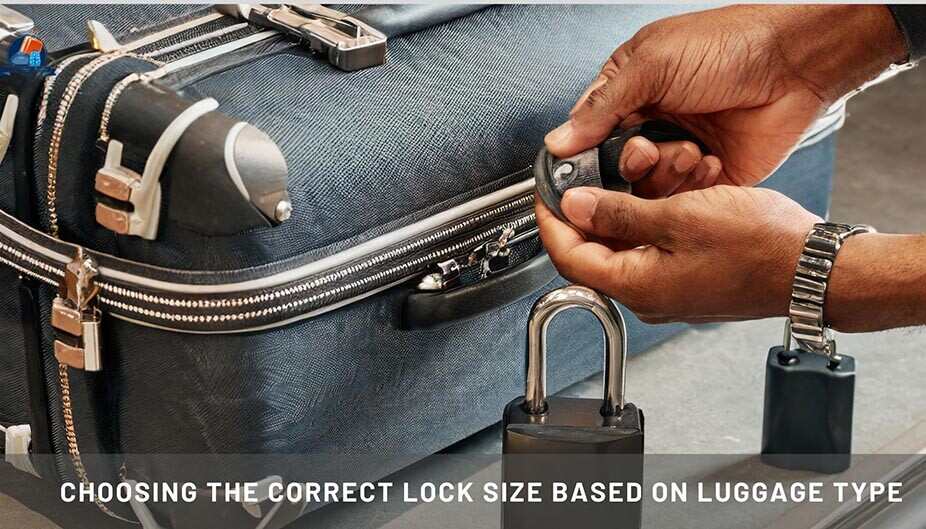
1. Hardside vs. Softside Luggage
I like small locks with shackles less than half an inch wide. I use them on my hard-shell carry-on suitcase. These provide security without protruding too much. It’s best to use larger locks for duffel bags and soft-side luggage. These locks should be around 3/4 inch wide because the flexible material can easily fit the size of these locks.
2. Number of Locks Needed
Many suitcases have zippers that you can lock. Usually, only two locks are needed for a regular-sized bag. Consider using three or four waves for larger bags or those with many compartments to ensure complete coverage. It’s a good idea to lock any exterior pockets, too.
3. Choosing a Lock Size
To find the correct lock size for your bag, measure the width of the zippers or locks on your luggage. For built-in TSA locks, measure the slot size. You want a lock shackle that fits through the zipper but allows it to slide. If the bond is narrow enough, it may provide more security. But if it’s too wide, it won’t lock the zipper.
I usually use small locks for my bags. The TSA approves these locks, which have a shackle width of 3/8 to 5/8 inch. They work well for both carry-on and checked bags. But when in doubt, bust out the measuring tape and fit your specific luggage.
Proper sizing is the key to keeping your belongings secure on the go. You can relax when you have strong locks on your luggage. This way, your belongings will be safe during travel.
How do you find solid and Tough Locks That Won’t Break Durability Matters?
When it comes to luggage security, durability is critical. As an avid traveler, I’ve learned that flimsy locks won’t cut it. It would be best to have something challenging for travel that keeps thieves away.
Over the years, I’ve used many luggage locks, from cheap ones to fancy Bluetooth ones. Sturdy padlocks have always been the ones that have lasted the longest and given me the most peace of mind. My favorites are brass or steel padlocks with a shackle thickness of at least 5/16 inch. The thicker the shackle, the harder it is to cut.
Look for padlocks that are designed for luggage or travel. These will have wider shackles that can fit through the zipper holes and clasps on most bags and cases. Standard padlocks may not work with your particular luggage. To find the correct shackle width, measure the zipper and locking holes on your bag.
After you find sturdy luggage that fits:
- Try different locks.
- Check how the shackle slides through the holes in your bag.
- Make sure the lock fastens the zippers.
- Give the safety a firm tug to ensure the shackle is hard to pry open.
For added security, choose a padlock with a reinforced or double-locking shackle. These make it much more difficult for thieves to cut through. You can choose a lock with a keyway that is not round. This type of lock needs a key that has a unique shape, making it very difficult to pick.
Conclusion
Choosing a strong and secure lock for your luggage is worth picking when you travel. I travel a lot for work and fun, so I understand the frustration of finding damaged or stolen luggage.
So, Follow my shared information. Please choose the correct luggage security locks for a safe journey.
Invest in good locks that follow TSA rules. Measure them correctly. You can feel confident that your bags and everything inside will arrive safely. For a few extra minutes of effort, you’ll know your luggage is protected.
A strong lock can stop thieves from taking your stuff but can’t guarantee total safety. When you travel, don’t worry about luggage security. Choose a reliable lock to keep your bags sealed. Sweet dreams and safe travels!

Jeffrey C. Fields is an experienced travel writer passionate about uncovering the world’s hidden gems. With years of global exploration, he shares unique insights into diverse destinations, offering readers a fresh perspective on our planet’s beauty.

